MXA RACE TEST: THE REAL TEST OF THE 2022 YAMAHA YZ450F
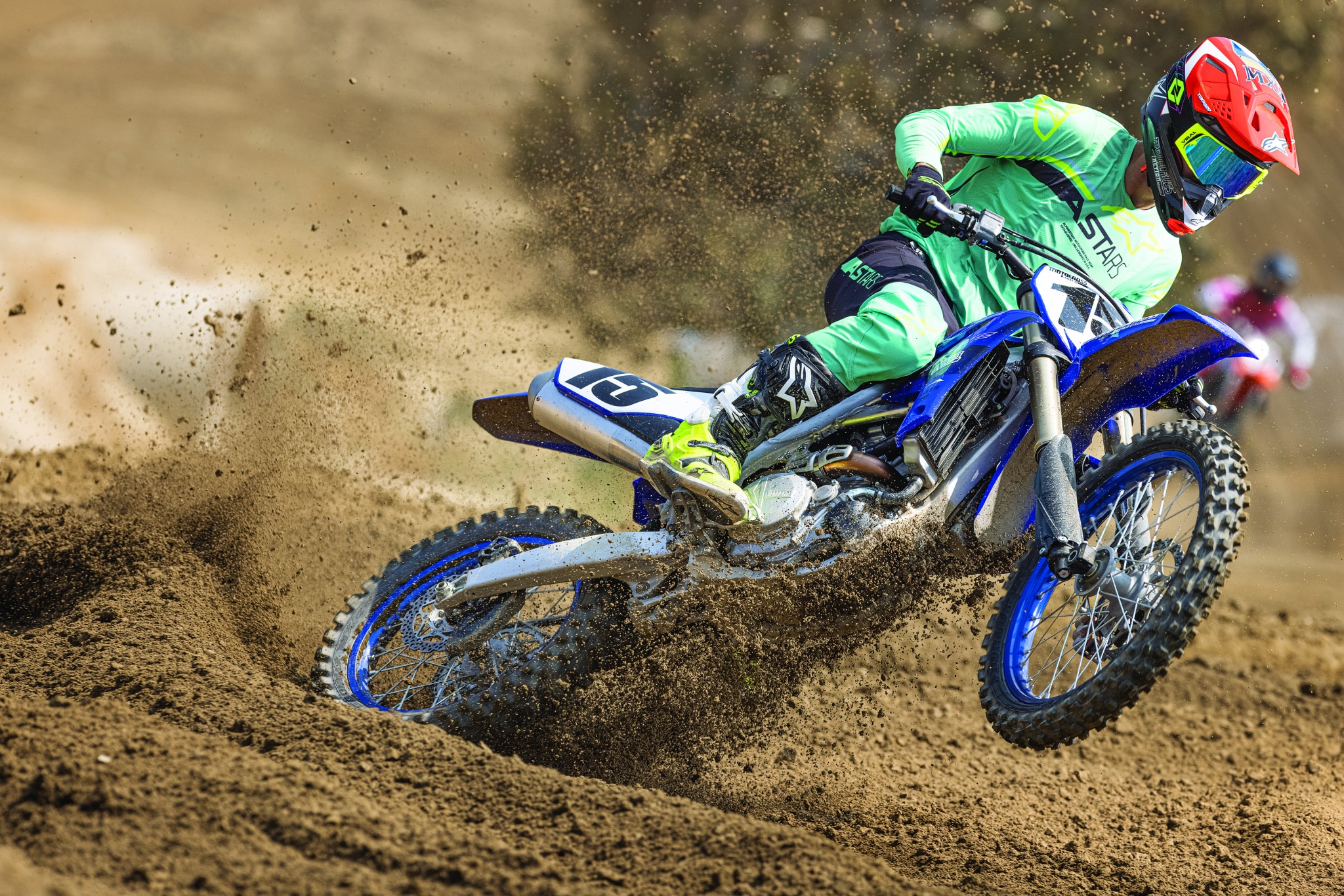
Q: IS THE 2022 YZ450F BETTER THAN THE 2021 YAMAHA YZ450F?
A: No. Yamaha’s engineers and marketing men didn’t feel the need to spend R&D money on the 2022 YZ450F. What updates they did do were all centered around making the rear wheel lighter, although it didn’t actually end up being any lighter; however, the move from the previous cross-2 spoke lacing to the new cross-3 lacing was a big improvement in strength and shock absorption. A cross-3 spoke pattern’s spokes cross-over three other spokes from the hub to the rim. This positions the spokes at a more laid-down angle, giving them more resilience, which, in turn, improves the rear wheel connection to the ground.
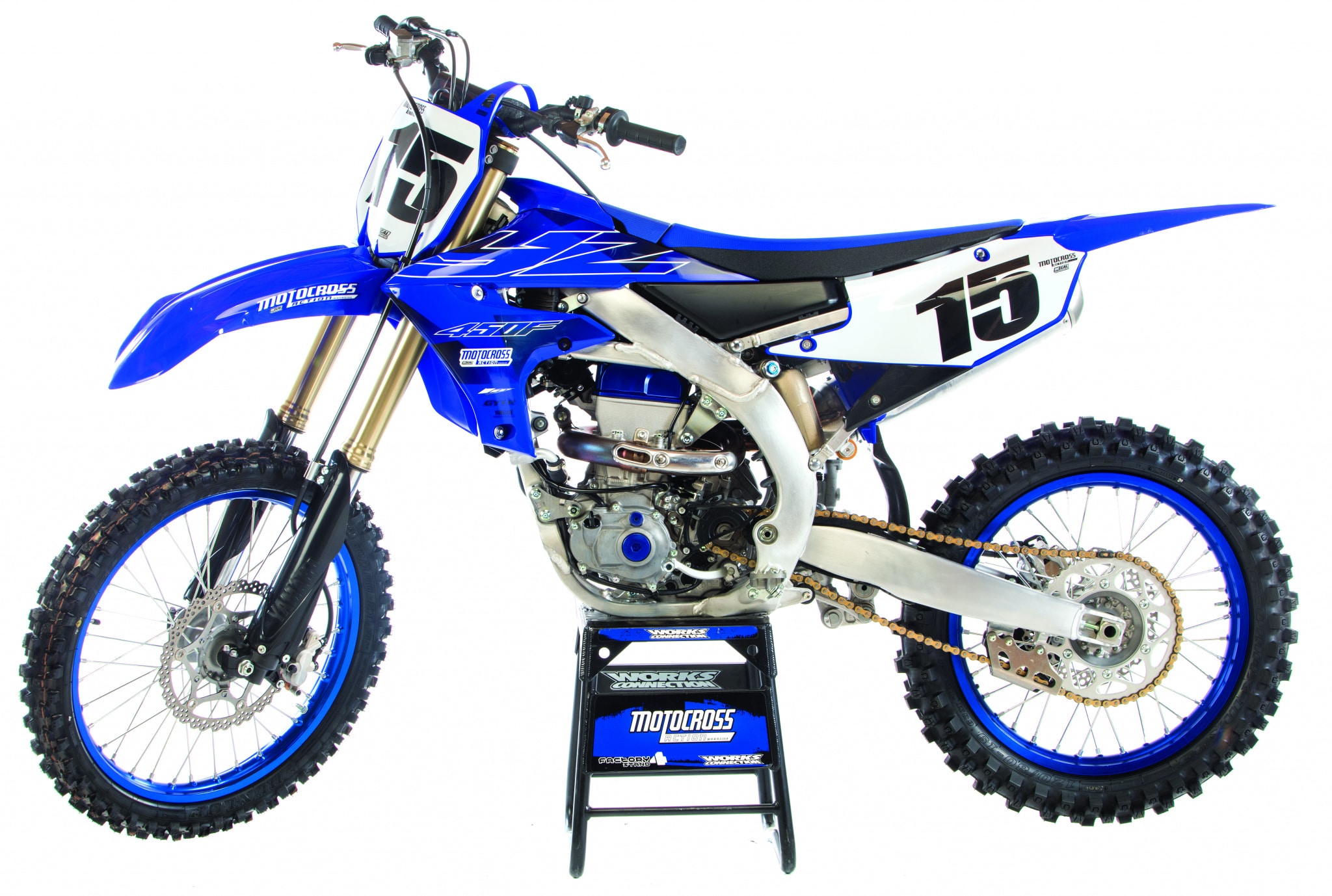 The 2022 Yamaha YZ450F is identical to the 2021 model, save for a new rear wheel and updated in-mold graphics.
The 2022 Yamaha YZ450F is identical to the 2021 model, save for a new rear wheel and updated in-mold graphics.
Q: WHAT HAS YAMAHA CHANGED SINCE THE FIRST BACKWARDS ENGINE DESIGN IN 2010?
A: Don’t be fooled into thinking that just because Yamaha only made modest upgrades to the 2022 YZ450F that it hasn’t invested time and money into the YZ450F package since 2010. In fact, a quick perusal of the history of the backwards-engine Yamahas will reveal a steady improvement pattern. Here is a quick history of YZ450F development steps since this generation was first introduced.
2010. This was the first fuel-injected, downdraft, four-valve YZ450F. The throttle body was a 44mm Keihin EFI. The YZ450F cylinder was tilted 8.2 degrees rearward (and given that the 2009 engine was tilted forward 4.5 degrees, that was a 12.7-degree shift). It had a 2mm-larger bore (97mm) and 2.6mm-shorter stroke (60.8mm). The crank was offset 12mm, and a four-valve head replaced the previous Genesis five-valve head. On the chassis, the fork offset was reduced by 3mm (25mm to 22mm). The head angle was steepened 0.1 degrees and the weight bias moved rearward by 2 percent. The 2010’s Kayaba SSS forks had 10mm more stroke (from 300mm to 310mm), were 7mm longer, and had 10 percent more low-speed compression damping. The fork tubes were 2mm smaller in diameter where they passed through the top triple clamp. The Playstation-like GYTR Power Tuner enabled custom mapping.
2011. The only updates for 2011 were a new clutch actuation arm and two-tone white and blue radiator wings.
2012. The 2012 updates included new mapping and a 42mm-longer muffler (with a 3mm-smaller core). The 48mm Kayaba forks got new valving, while the 50mm Kayaba shock received a new rebound adjuster oil passage, less low-speed rebound and more high-speed compression. On a durability note, the locating pins on the shift forks were changed to circlips.
2013. The only changes for 2013 were a white rear fender and black handlebars.
2014. The 2014 engine’s intake cam had 0.20mm less lift. The intake valves’ diameters were increased from 36mm to 37mm. The exhaust valves were upped from 30mm to 30.5mm, and a flat-top piston replaced 2013’s domed piston. The engine was wet-sumped and the oil tank removed. Third gear was moved closer to second gear to close up the gap. The airbox volume was 256 percent larger. The 2014 YZ450F was 14mm narrower at the radiator wings and 22mm lower at the seat with a 14mm shorter wheelbase. The frame’s head angle was 27.08 degrees instead of 26.95 degrees, and the head tube was moved back 10mm. The front-axle was increased from 20mm to 22mm. A 49-tooth sprocket replaced the previous year’s 48, but a new primary gear made the gear ratio similar to the 48-tooth ratio. The current wraparound exhaust system replaced the corkscrew-like Tornado system.
2015. The SSS forks featured new valving, stiffer fork springs and redesigned fork tube wall thicknesses. It had black anodized Excel rims, Dunlop MX52 tires, quarter-turn Dzus fasteners on the airbox cover, revised mapping and a 20-percent-lighter throttle return spring. The 2014’s previous aluminum lower motor mounts were replaced by steel plates. In yet another gearing change, the 49-tooth rear sprocket was changed back to 48 teeth. For reliability, the gear stop lever was changed from a bearing to a roller.
2016. The 2016 exhaust cam had 0.3mm more lift, 8 degrees less duration, and, when combined with 0.1mm less lift on the intake cam, stiffer valve springs and new dog shapes on the gears, the 2016 engine saw an increase in power. The fork offset was changed back from 22mm to 25mm, and the rear shock spring went from 58 N/mm to 56 N/mm. The fork springs were stiffer, the swingarm pivot forgings widened by 12mm, the head stays were made thicker, and the footpegs were lowered 5mm. Both a 270mm front brake rotor and launch control system were added
2017. Yamaha recessed the holes for the gas tank cover’s Dzus fasteners. An improved countershaft seal, updated oil strainer and improved metal in the rear rotor helped durability. Yamaha also switched from MX52 tires to Geomax MX3S tires.
2018. The 2018 radiator shrouds featured new air ducts and a seat that was 9mm lower at the front and 18mm lower at rear. The aluminum frame was revised. The 2018 bar mounts were 5mm taller than the 2017 mounts. The now aluminum head stays were repositioned lower on the cylinder, and the rims were blue anodized.
2019. With the addition of electric starting and Wi-Fi mapping, the 2019 YZ450F jumped out of the past. The engine got new camshaft profiles, a redesigned crankshaft, a higher compression piston and a 44mm Mikuni EFI throttle body (instead of Keihin). The cylinder was slanted 2 degrees more upright, the radiators enlarged and the muffler moved farther forward.
For 2019, the YZ450F also received updated Kayaba SSS suspension valving, more rigid fork lugs, stiffer wheel collars, less drag on the electric starter system, 16-percent denser seat foam and a blue valve cover. The transmission and clutch were overhauled for a more direct connection as well as enhanced durability. Revised gears with a wider surface area, updated clutch plates and a stiffer outer pressure plate enhanced the driveline.
2020. The cylinder head’s height was 10mm lower and 10mm narrower. The head pipe was mounted to the head with two studs instead of the previous three.
The cams were moved 14mm closer together and sit on 6mm lower cam towers. The valve angle was 7 degrees more upright. The combustion chamber volume was reduced 6.65cc, and the compression went from 12.9:1 to 13.0:1. The spark plug extends 4.9mm farther into the burn area. The connecting rod is 1.5mm longer to reduce the side thrust friction by 2 percent. The stock ECU map is spec’ed to improve low-rpm throttle response. The exhaust pipe is 3.2mm larger at the head pipe (38.1mm to 41.3 mm diameter). The regulator and rectifier are now bundled into one unit.
2021. No changes apart from cosmetics.
2022. All of the changes for 2022, save for cosmetics, were focused on the rear wheel. Thanks to a lighter hub (28 grams), lighter sprocket (42 grams) and lighter chain (73 grams), Yamaha saved 5 ounces of unsprung weight on the rear wheel; however, that weight savings was offset by the added weight of the 36 longer spokes used on the new cross-3 spoke pattern.
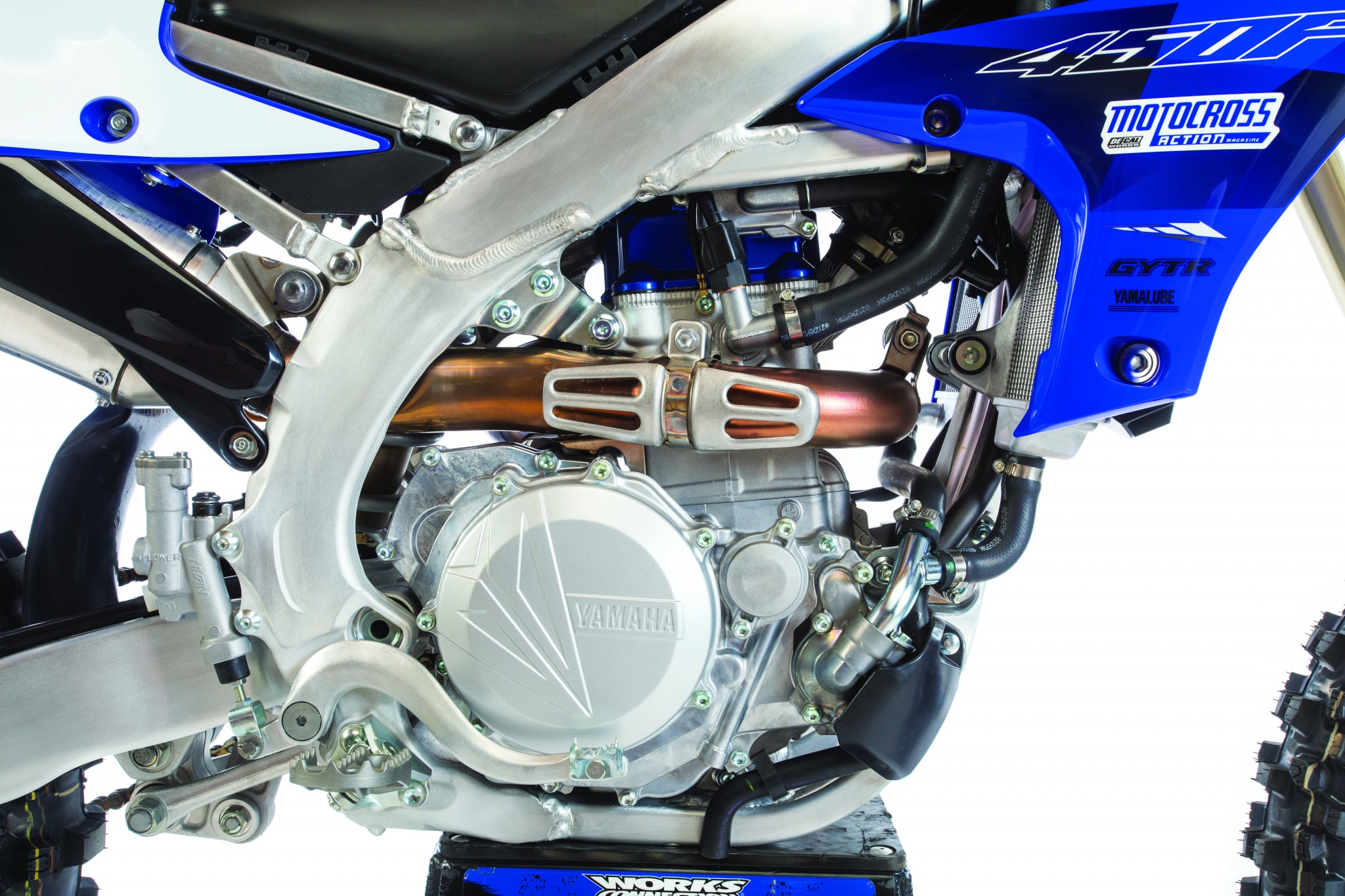 Yamaha’s powerband strategy was the road less traveled by the other brands. They mellowed out the low-to-mid transition to calm down the chassis.
Yamaha’s powerband strategy was the road less traveled by the other brands. They mellowed out the low-to-mid transition to calm down the chassis.
Q: HOW DOES THE 2022 YAMAHA YZ450F ENGINE RUN ON THE TRACK?
A: It goes without saying that it runs just like the 2021 YZ450F, which was identical to the 2020 engine. The overall powerband is divided into two distinct parts. That may sound strange in world where most engine designers are prioritizing seamless, integrated, linear powerbands that produce a steady increase in power as the rpm climb. Not so with the 2022 YZ450F. It isn’t all that powerful below 9000 rpm. In fact, the YZ450F ranks fifth in horsepower at 6000 rpm (only beating the RM-Z450). At 7000 rpm, it ranks sixth (beating out no one). At 8000 rpm, it only beats out the KX450. That doesn’t sound very good, but in motion it turns out that it makes the engine supremely usable. Decreasing power from low to mid decreased the fright factor of previous hard-hitting YZ450F engines and paid big dividends in getting them to hold a line at turn-in. Less power translated into more control, especially at the front tire, and the end result of the unique two-part powerband was better handling.
Which leads us to how the engine performs above 9000 rpm. What it lacked below 9000 rpm, it made up for above it. Yamaha’s powerband strategy was the road less traveled by the other brands. It hits hard momentarily off idle and then goes soft in the low-to-mid transition. How soft? It makes almost 4 horses less than the CRF450 at 7000 rpm, but from 9000 rpm on up, it builds beaucoup power. It peaks at 58.56 horsepower, the most in the 450 class.
The muted low-to-mid power, followed very late by romping, stomping horsepower on top, is quite unique. The engine is especially good on fast straights and long starts. We credit the engine’s soft bottom, expanding midrange and ultra-strong top-end for why the YZ450F handles so much better.
Q: DOES THE 2022 YZ450F POWERBAND HAVE ANY GLITCHES?
A: Yes. There is a herky-jerky throttle response coming off of idle. It is too aggressive initially and burps out a jolt of power that unbalances the chassis. We used the GYT-R Power Tuner to iron out this over-eager hit. Next, the YZ450F rolls through the first half of its powerband very casually. Test riders often complained that there was no sense of urgency below the midrange. They often resorted to the clutch to jump up the pace. The powerband has no dips or flat spots, but below nine grand it doesn’t have as much surge. Finally, the YZ450F hits peak horsepower at a much higher rpm than its competitors (500 rpm higher than a KTM or Honda). In motion, that translates into a YZ450F rider having to hustle very high in the powerband to get the most out of the engine.
Q: HOW DID THE 2022 KAYABA SSS SUSPENSION PERFORM?
A: Dating back to 2006, Yamaha has had the best forks on the track; but, as its competition has closed the gap, Yamaha has responded to the pressure by going stiffer to get the forks to ride higher in their stroke and hold up better under loads‚ which is strange, because the forks always felt like the front of the bike was down. For 2022, Yamaha may have jumped the shark by going stiffer yet again. In the name of getting the chassis flatter, Yamaha’s engineers increased the mid- to high-speed compression damping on the forks with the goal of getting the front end to ride higher and to lessen excessive forward chassis movement (diving) over rough ground. To complement this front-end change, Yamaha re-valved the shock’s mid- to high-speed compression damping to lessen squat. Yamaha’s goal was to balance out the chassis. The spring rates remained the same, front and rear, but the end result was that the 2022 YZ450F suspension setup was considerably stiffer. This was great for Pros and fast intermediates, but most Novices and Vets felt compelled to go out on the low-speed compression clickers, front and rear, to undo what Yamaha had done.
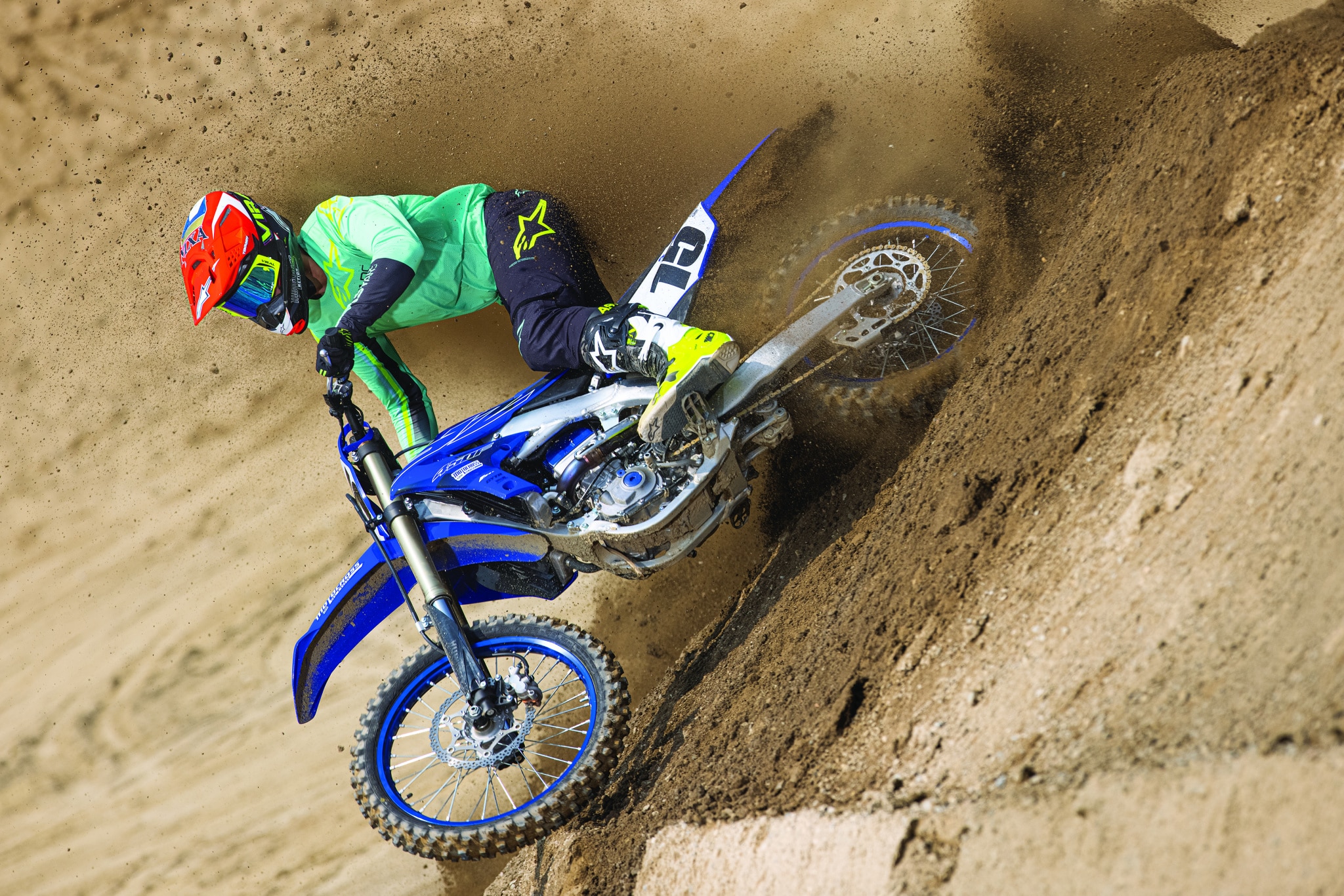 The 2022 Yamaha YZ450F has the worst ergonomics of all the 2022 450 motocross bikes. It is big, wide, loud, bulky and heavy.
The 2022 Yamaha YZ450F has the worst ergonomics of all the 2022 450 motocross bikes. It is big, wide, loud, bulky and heavy.
Q: HOW DOES THE 2022 YAMAHA YZ450F HANDLE?
A: Starting with the 2020 Yamaha YZ450F, the overall feel of the YZ450F’s frame geometry began to feel better, but strangely, there were no geometry changes. Instead, in 2020 Yamaha stiffened the rear of the frame and softened the front with modified tube thicknesses. The result was that the chassis felt more planted in the front than ever before. There was less front-end wiggle on corner entrance, and the rear end didn’t wallow under acceleration. Paradoxically, MXA believes that the handling improvements are a direct result of the metered power output of the engine from low to mid. In short, Yamaha detuned the engine until they found the right mix of horsepower to go with the chassis’ tolerance for being loaded. It’s odd that the source of the YZ450F’s handling improvements germinates from the non-confrontational style of power.
We don’t expect riders who have been turned off by previous YZ450Fs to jump right on the 2022 and fall in love‚ because the chassis isn’t as lovable as KTM, GasGas, Husqvarna or Kawasaki units. The 2022 YZ450F goes a long way towards addressing some, but not all, of the test rider complaints.
Q: HOW GOOD ARE THE YZ450F ERGONOMICS?
A: Terrible. In MXA’s opinion, the YZ450F has the worst ergonomics of all the 2022 450 motocross bikes. For loyal Yamaha racers, it is an improvement over what they had before, but for riders transitioning from other brands, it has a host of flaws‚ and, from a business point of view, you can’t just sell bikes to former Yamaha owners. You have to steal buyers from the competition. Here are two simple fixes for Yamaha.
The 2022 Yamaha handlebars are mounted 16.5mm farther forward than they were in 2019. The stock bar setup is awkward, unless you are very tall, but it can be fixed by putting the bar mounts in the rear holes on the triple clamps and rotating them to the forward position. Additionally, the seat feels swayback. For our taller test riders, we ran a 20mm-taller GYTR seat (and we put the handlebars back to the stock 16.5mm farther-forward position). This setup helped lessen the cramped footpeg-to-saddle height for tall riders; however, short riders hated this mod because the bars lifted their arms up, and with the tall seat they couldn’t touch the ground.
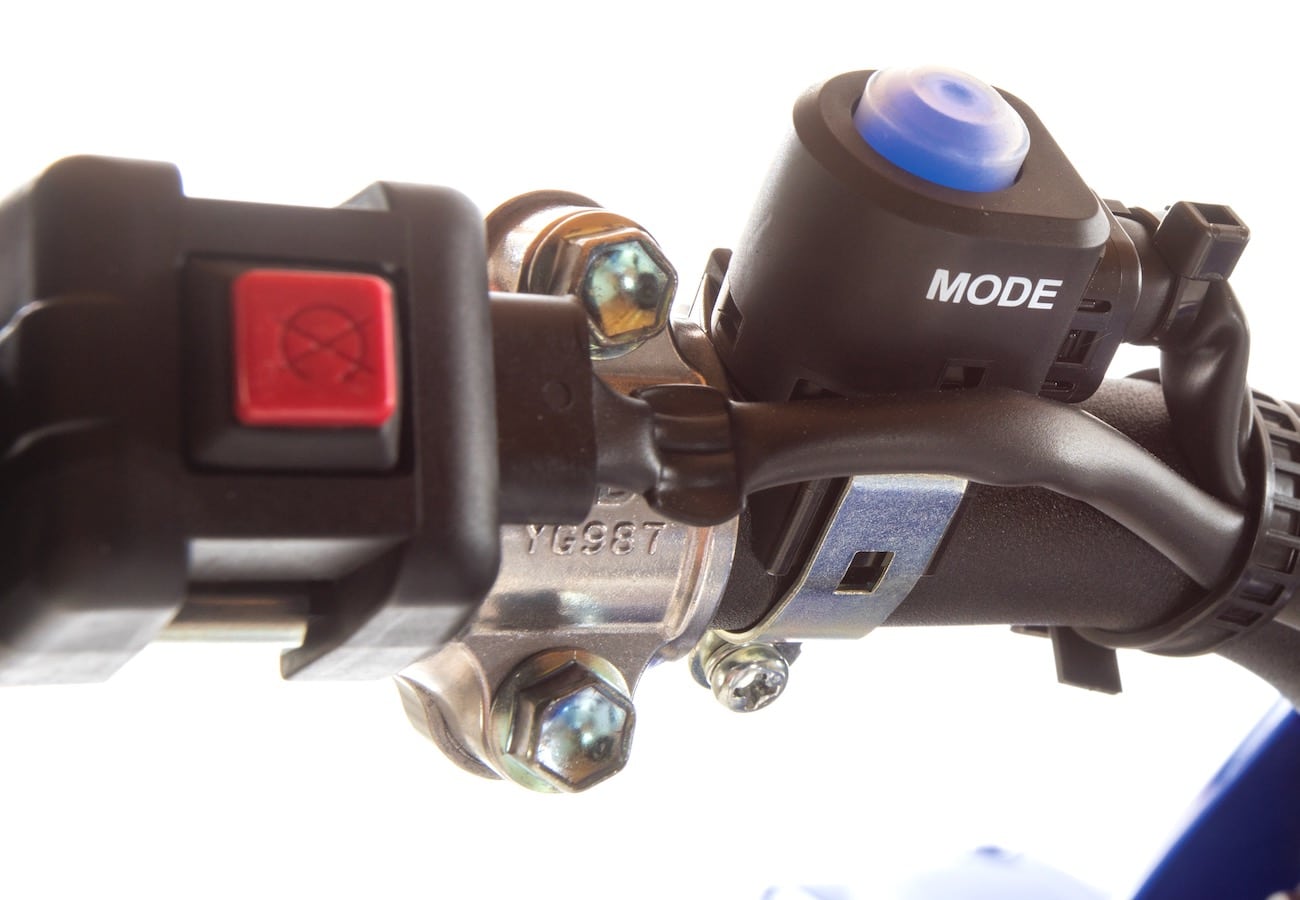 The WiFI mapping works great for those who know what they want, but the handlebar -mounted map switch comes with the same map in both positions.
The WiFI mapping works great for those who know what they want, but the handlebar -mounted map switch comes with the same map in both positions.
Q: WHAT ABOUT THE YZ450 MAPPING
A: First of all, MXA doesn’t think you should have to download any maps. Yamaha should have two distinctly different maps readily available through the handlebar-mounted map switch. But they don’t! The YZ450F map switch has the same map in both the stock setting (light off) and the blue light setting. This is stupid. We want Yamaha to install the stock map when the button’s light is off and their best Power Tuner map when the blue light is on. If they did this, then Yamaha riders wouldn’t have to go looking for maps. All the other bikes with map switches come with two or three preprogrammed maps that can be accessed with the push of a button; the Yamaha YZ450F comes with two identical stock maps
We do like Yamaha’s Wi-Fi-tunable smartphone app. It offers a wide selection of ready-made maps and the ability to make your own maps—if you feel comfortable doing that. Most MXA test riders choose the TP-3 (Travis Preston) map over the stocker or the other pre-programmed maps on the Yamaha app. The TP-3 map eliminates the jerkiness at low throttle settings and produces a much smoother overall powerband.
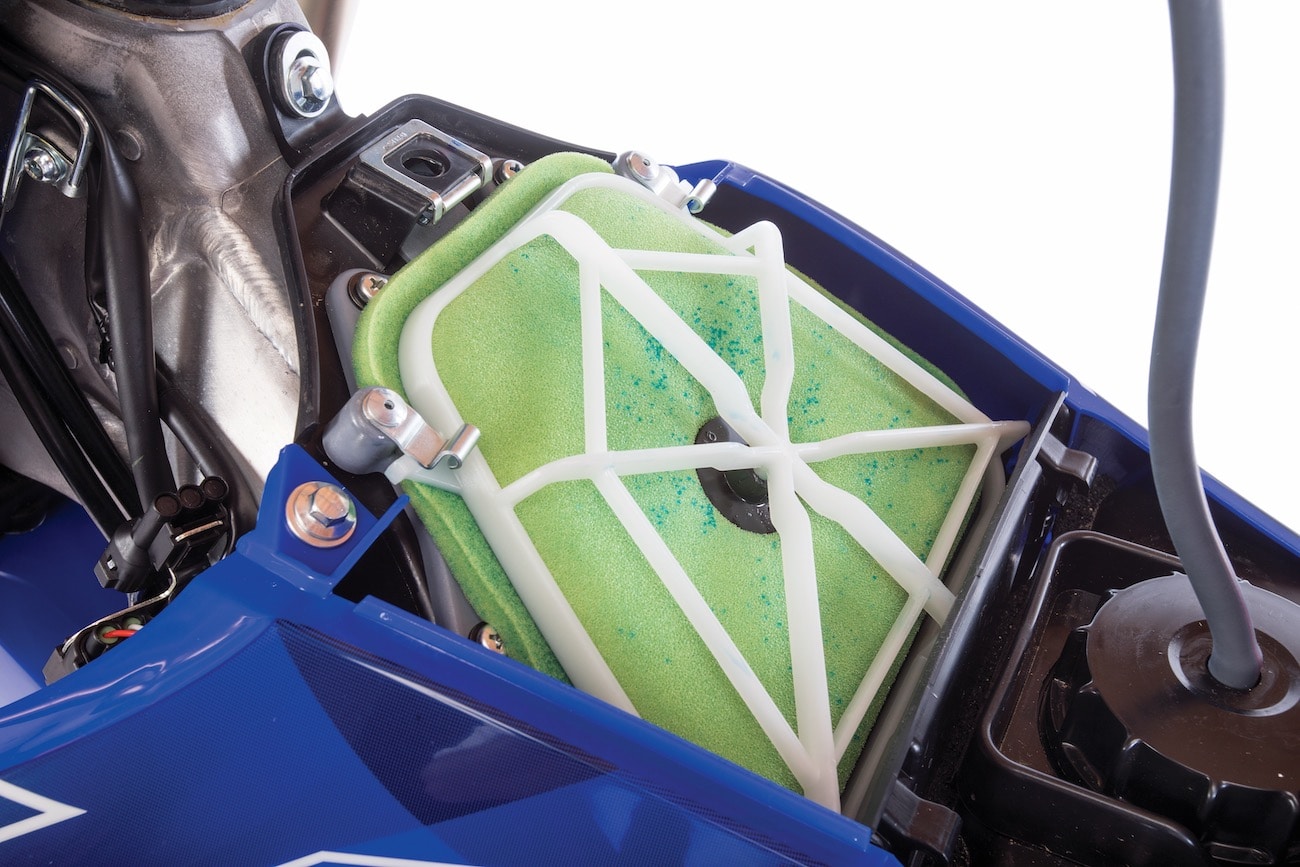 This is not the way to design an airbox, filter or mounting system.
This is not the way to design an airbox, filter or mounting system.
Q: HOW GOOD IS YAMAHA’S AIRBOX DESIGN?
A: We hate the YZ450F airbox and air filter design. From the inadequate flat piece of foam air filter to the minimal airbox volume to the radiator wings that scoop roost straight into the airbox, this system could be so much better than it is. The ultimate irony is Yamaha will sell you a GYTR Air Flow kit that uses a larger filter, no backfire screen, new base plate and a higher-volume airbox cover that breathes better than the stock air filter design for $149.95, which proves that they know the stock airbox is flawed.
Q: HOW MUCH DOES THE 2022 YAMAHA YZ450F WEIGH?
A: It weighs 238 pounds. MXA appreciates that Yamaha reduced the unsprung weight on the rear wheel for 2022. If Yamaha can’t make a dent in the porcine nature of the YZ450F, then unsprung weight is where they should focus their efforts. The 2022 Yamaha YZ450F is 15 pounds heavier than a 223-pound KTM 450SXF.
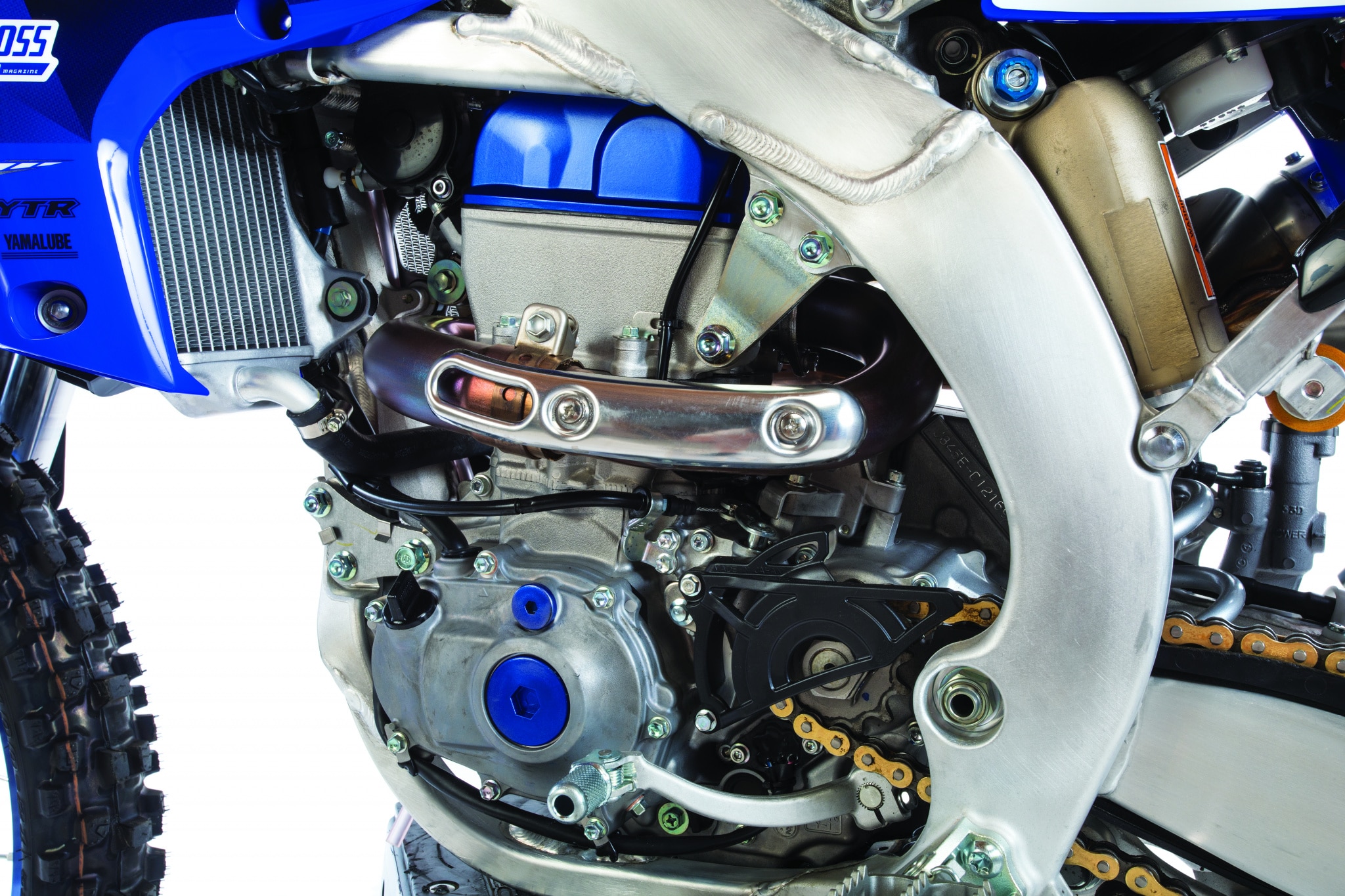 With its Kayaba SSS suspension, incredible dependability and broad powerband, the 2022 Yamaha YZ450F offers buyers good value for the money. ]
With its Kayaba SSS suspension, incredible dependability and broad powerband, the 2022 Yamaha YZ450F offers buyers good value for the money. ]
Q: WHAT DID WE HATE?
A: The hate list:
(1) Exhaust pipe. When you put the cylinder head on backwards, the pipe has to go forwards before it can go backwards. It is a pain to remove.
(2) Weight. Imagine how this bike would feel if it were 15 pounds lighter.
(3) Backwards engine. It was a creative idea back in 2010, but the limitations that it brings to packaging aren’t worth it.
(4) Centralization of mass. Trying to centralize mass is a great idea, but an even better idea is reducing mass in the first place.
(5) Noise. If you ride nothing but a YZ450F, you get use to the blaring noise from the muffler and airbox assaulting you from both ends. Our advice to YZ450F owners is to never ride a 2022 Husqvarna‚ because the silence will scare you into thinking the engine isn’t running.
(6) Grips. Almost any aftermarket grip is better than the stock Yamaha blister producers.
(7) Blue rims. We prefer silver rims, because blue and black rims get beaten up by roost and scratched by tire irons.
(8) Clutch. No brand needs a hydraulic clutch if no other brand has one, but the game changes when Honda, Kawasaki, KTM, GasGas, TM and Husqvarna are hydraulic, and Yamaha and Suzuki aren’t.
(9) Fork compression clickers. It is almost impossible to adjust the fork’s compression settings without taking the handlebars off or stripping out the clicker screws.
(10) Ergos. No one aspires to build a bike that is big, bulky, wide, tall, heavy and loud, so how did Yamaha get here?
Q: WHAT DID WE LIKE?
A: The like list:
(1) Engine. A great powerband in that it that helps the rider and chassis work better together.
(2) Reliability. Nothing is as reliable as a Yamaha YZ450F. It will last forever.
(3) Suspension. Stiffer isn’t better for everyone, but at least the clickers can soften the blow.
(4) Brakes. Yamaha updated its brakes in 2020 by increasing the front caliper’s piston size from 22.65mm to 25.4mmm, making the front brake pads 29.2 percent larger, increasing the front rotor’s surface area by 16 percent, and reducing the size of the rear rotor from 245mm to 240mm (with the required caliper and hanger bracket changes).
(5) Plastic. For 2022, you can order two versions of YZ450F plastic. The stock blue color (which is more noticeable because the number plate backgrounds are blue instead of white) or the Monster Energy Yamaha team plastic (which has more black plastic and a green Monster Energy claw logo). The stock blue version retails for $9599, and the black Monster version sells for $9799. Save $200 by not buying the ugly Monster model.
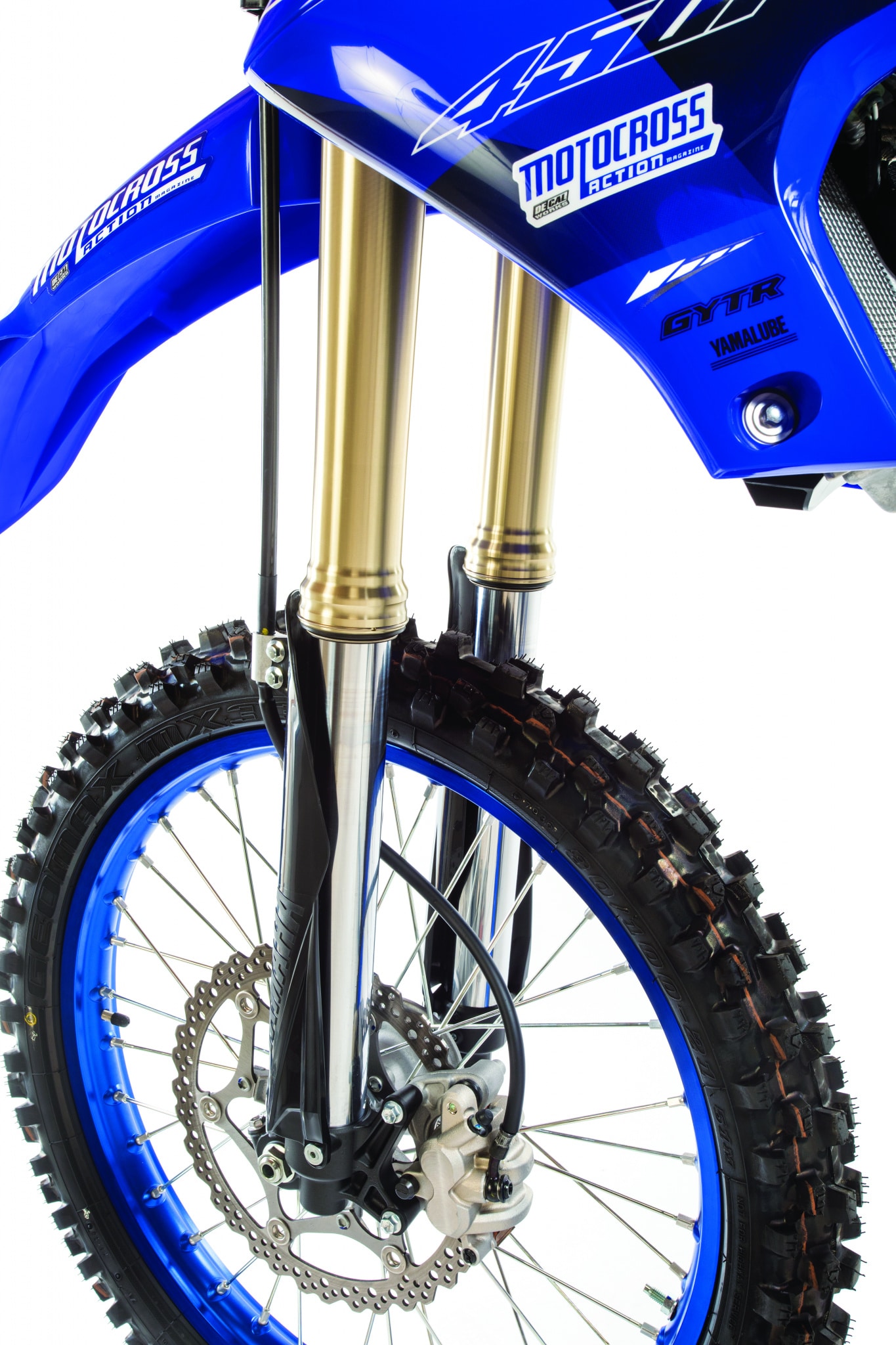 Yamaha’s SSS suspension is a sure thing—and even upping the compression damping for 2022 couldn’t hurt its performance.
Yamaha’s SSS suspension is a sure thing—and even upping the compression damping for 2022 couldn’t hurt its performance.
Q: WHAT DO WE REALLY THINK?
A: Thanks to the superiority of its Kayaba SSS suspension, incredible dependability and broad powerband, the Yamaha YZ450F offers buyers good value for the money. It is the perfect bike for a guy who doesn’t want to spend hard-earned cash post-purchase; however, as splendid as the Yamaha is in its strong areas, it is still an acquired taste because of left-over flaws that seem to be beyond Yamaha’s scope or budget to fix.
MXA’S 2022 YAMAHA YZ450F SETUP SPECS
This is how we set up our 2022 Yamaha YZ450F for racing. We offer it as a guide to help you find your own sweet spot.
KAYABA SSS FORK SPECS
Yamaha’s SSS suspension is a sure thing—and even upping the compression damping for 2022, they couldn’t hurt its performance. We like that Yamaha’s engineers and test crews don’t mess too much with success. For hardcore racing, these are MXA’s recommended 2022 Yamaha YZ450F fork settings (stock settings are in parentheses).
Spring rate: 5.0 N/mm
Oil quantity: 290cc
Compression: 11 clicks out (9 clicks out)
Rebound: 8 clicks out (9 clicks out)
Fork-leg height: 5mm up
Notes: SSS forks can be used for Beginners, Novices, Intermediates and AMA Pros. There’s a setting for everyone. Be very careful with the compression clicker. One clicker is the equivalent of a couple clicks on other brands’ forks.
KAYABA SHOCK SETTINGS
For hardcore racing, these are MXA’s recommended 2022 YZ450F shock settings (stock settings are in parentheses).
Spring rate: 58 N/mm
Race sag: 105mm (100mm stock)
Hi-compression: 10 clicks out
Lo-compression: 12 clicks out
Rebound: 11 clicks out
Notes: We thought the 58 N/mm shock spring was going to be too stiff for slower and lighter riders, so we had the 2017 56 N/mm spring with us just in case. Amazingly enough, we had riders as light as 130 pounds still get acceptable race sag from the stiff spring.


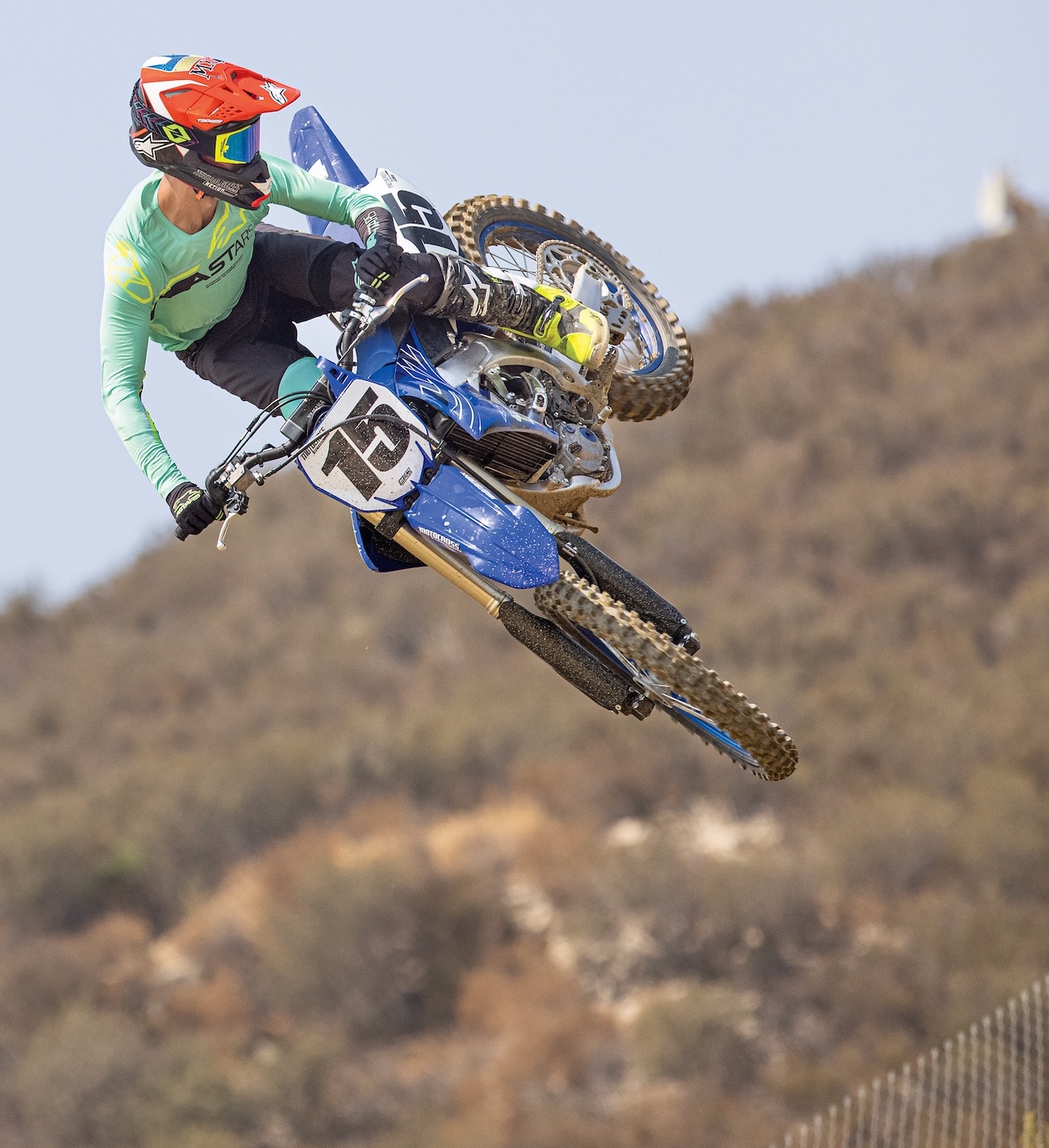

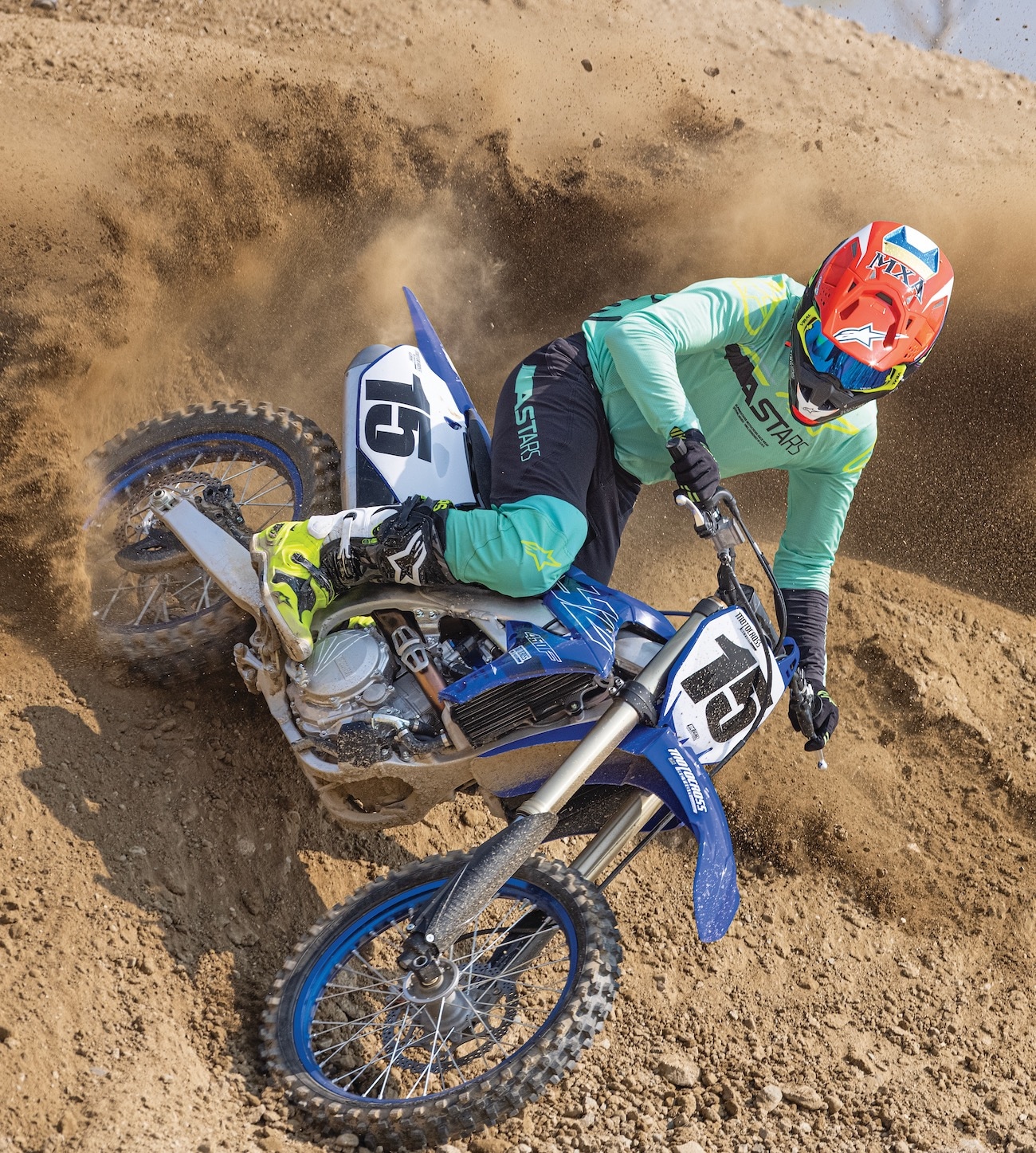



Comments are closed.